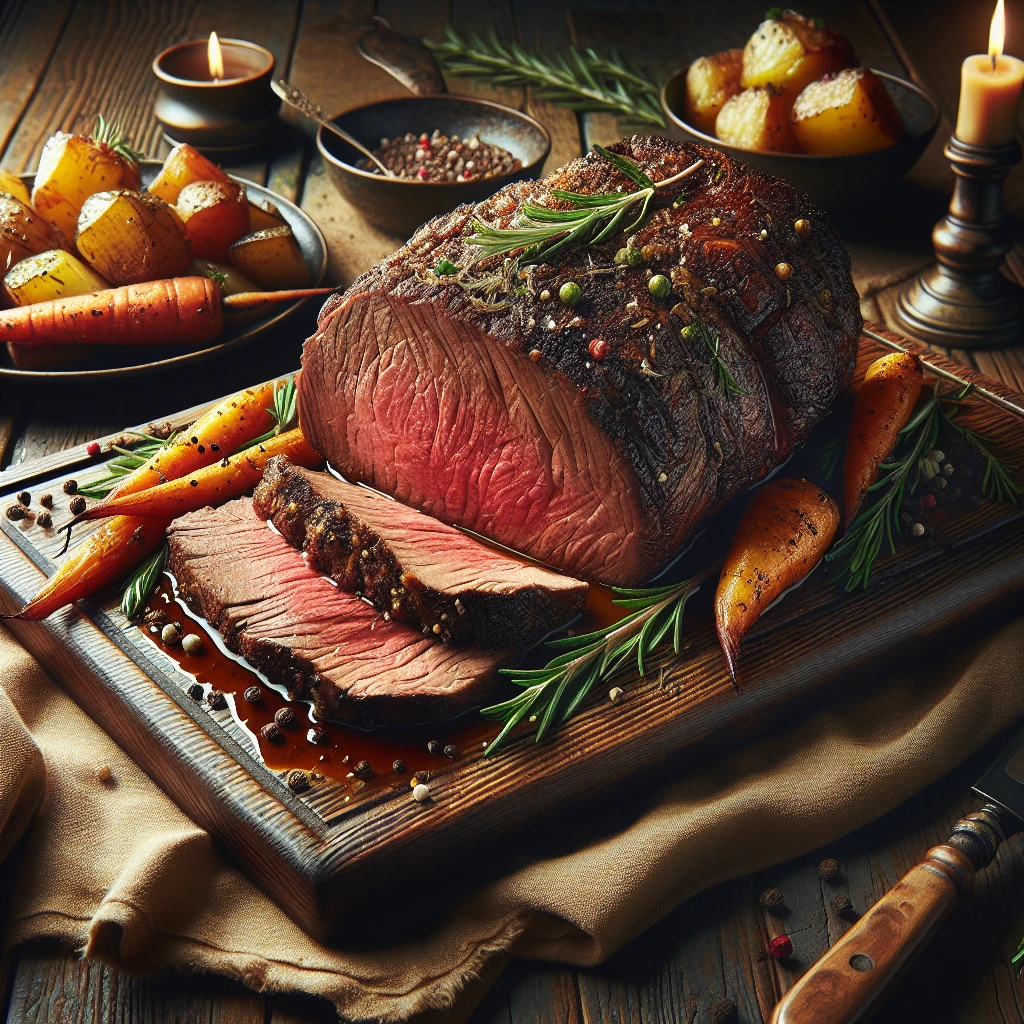
This traditional roast beef tenderloin is a true showstopper, perfect for special occasions or a luxurious Sunday dinner. Its tender, juicy texture and rich flavor are sure to impress your guests and leave everyone craving more.
Beef tenderloin is the star of this dish, known for its tenderness and lean, buttery flavor. The key is to choose a high-quality cut. Olive oil helps the seasoning adhere to the meat and adds a subtle richness. Salt and black pepper are essential for enhancing the beef's natural flavor. Fresh herbs like rosemary and thyme complement the beef with their aromatic, earthy notes, while garlic brings a touch of pungency that rounds out the seasoning blend.
This roast beef tenderloin pairs beautifully with a classic red wine sauce or a creamy horseradish sauce. Serve it alongside roasted root vegetables or a fresh green salad for a well-rounded meal. Mashed potatoes or a hearty risotto also make excellent accompaniments.
Start by preheating your oven to 425°F. This high temperature will give the tenderloin a beautiful, flavorful crust. While the oven heats up, trim any silver skin and excess fat from the tenderloin. You want to remove these parts to ensure even cooking and a pleasant texture.
Next, rub the entire tenderloin with olive oil, salt, and black pepper. This step is crucial for flavor and helps the seasoning adhere better. After that, sprinkle the chopped rosemary, thyme, and minced garlic evenly over the meat. These fresh herbs and garlic will infuse the beef with a wonderful aroma and taste as it roasts.
Place the seasoned tenderloin on a rack in a roasting pan. This setup allows air to circulate around the meat, ensuring it cooks evenly. Slide the pan into your preheated oven and let it roast for about 25-30 minutes. You're aiming for an internal temperature of 135°F for medium-rare, which is perfect for a tenderloin.
Once the tenderloin reaches the desired temperature, remove it from the oven and cover it loosely with foil. Let it rest for 10-15 minutes before slicing. Resting is crucial as it allows the juices to redistribute throughout the meat, making each bite juicy and flavorful.